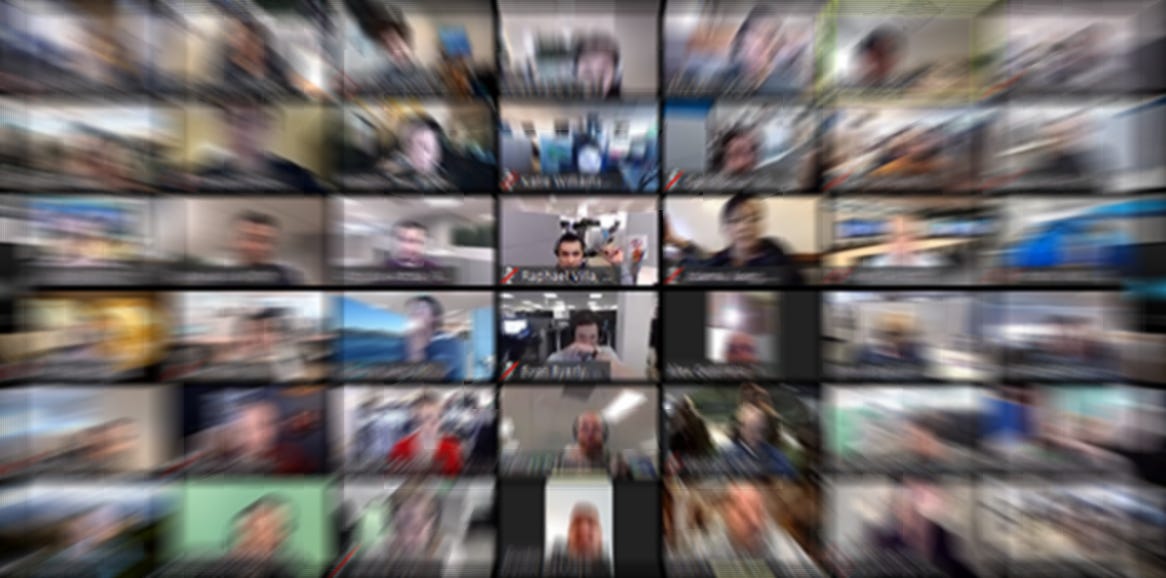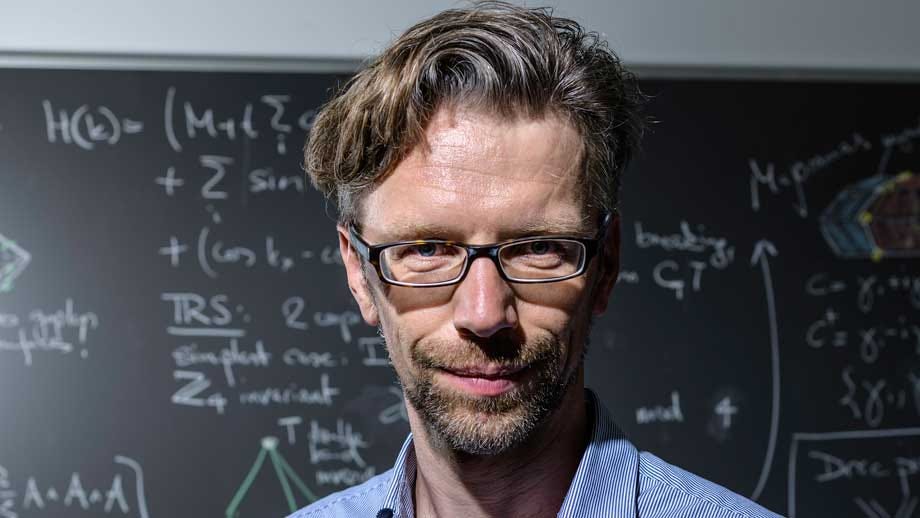Graphene and 2DM Online conference (GO2021) – (Part I)
The GO2021 Online Conference taked place during the 20-21 April.
I would like to present in this post a summary of the first day and invite my readers to read in 7 days of the summary of the second day.
I hope that will be of interest. Currently, the situation in the world does not allow us to travel to organize events and we have to carry out these events online that so far are being kindly accepted by the scientific community.
Graphene and 2D Materials have a huge potential to impact established industrial sectors, building new emerging industries and niche segments and creating economic value.
The two-day Graphene and 2DM Online conference (GO2021) presented the most recent advances in fundamental research in electronics, energy storage, biohealth, composites, coatings or sensors.
25 high profile talks from worldwide most influential academia experts in the Graphene and 2DM sector presented speeches in this international event on how advanced materials will change the future of technology and impact positively our daily life
The speakers of the first day with their titles were:
Paolo Samorì (Université de Strasbourg, France) - Molecular functionalization of 2D materials: high-performance opto-electronic devices
Cesar Moreno (ICN2, Spain) - Atomically-precise Graphene Nanoarchitectonics
Andrea Liscio (National Ressearch Council of Italy (CNR), Italy) - Multiscale Charge Transport in van der Waals Thin Films: Reduced Graphene Oxide as a Case Study
Haldun Sevinçli (Izmir Institute of Technology, Turkey) - Charge Transport in Multilayer Graphene Oxide: Bulk Diffusion versus Device Properties
Mario Amado (University of Salamanca, Spain) - Valley currents via ballistic edge modes in graphene superlattice near the main Dirac point
Stephen Power (Trinity College Dublin, Ireland) - Manipulating valley currents in graphene nanostructures
Zhenxing Wang (AMO, Germany) - Wafer Scale Integration of Graphene
Yuanyuan Shi (IMEC, Belgium) - Engineering wafer-scale epitaxial two-dimensional materials for advanced high-performance nanoelectronics
Sten Vollebregt (TU Delft, The Netherlands) - Wafer-scale graphene: a transfer-free approach
Luzhao Sun (BGI, China) - Controlled Growth of High-Quality CVD Graphene Film
Klaas-Jan Tielrooij (ICN2, Spain) - Graphene for nonlinear THz photonics and thermal management
Kaichen Zhu (Soochow University, China) - Fully inkjet printed h-BN memristors
Simon Skrzypczak (IEMN, France) - Switch RF based on 2d materials
Filipa Silva (I3S, Portugal) - Graphene-based materials as platforms for skin disease treatment
Bárbara Diego Lisboa Amaral Lopes (ICN2, Spain) - Graphene Nanostructures Integration in Nanophotonic Biosensors
Gabriele Bianca (Istituto Italiano di Tecnologia, Italy) - Solution-processed photoelectrochemical (PEC)-type photodetectors based on layered GaSe and GeSe nanoflakes
Dorde Jovanovic (Institute of Physics Belgrade, Serbia) - Is solar going indoors?
Fernan Saiz (KAUST, Saudi Arabia) - Predicting the strain effects in 2D materials: the case of ZrS3 monolayers
Yaqing Shen (Institute of Functional Nano and Soft Materials (FUNSOM), China) - Anatomy of 2D materials based memristors: the role of each type of defect
Wenwen Zheng (Soochow University, China) - Effect of metal deposition on atomically h-BN
Sebin Varghese (ICN2, Spain) - A novel technique to measure thermal diffusion of thin films:
Maria Tenorio (ICN2, Spain) - Built-in atomically sharp superlattice heterojunctions from hybrid Nanoporous Graphene
Michele Magnozzi (Università di Genova, Italy) - Local dielectric-function modulation and exciton recombination efficiency in monolayer WS2 flakes
Alexander Block (ICN2, Spain) - Experimental observation of giant thermal diffusivity of Dirac fluid
David Saleta (ICN2, Spain) - Systematic study of the thermal conductivity of MoSe2 as a function of thickness - from bulk to monolayer
Peng Xiao (ICN2, Spain) - Reversing of humidity response of MoS2- and WS2-based sensors with metal coatings
Andrea Tomadin (Università di Pisa, Italy) - Microscopic theory of plasmon-enabled resonant terahertz detection in bilayer graphene
Chuyao Tong (ETH Zurich, Switzerland) - Valley and Spin Blockade in Graphene Quantum Dots
Panaiot Zotev (University of Shieffield, UK)- Transition metal dichalcogenide photonic dimer nano-antenna with ultra-small gap
Mahmoud Mohamed Saad Abdelnabi (Sapienza university of Rome, Italy) - Hydrogen isotopes functionalization of nano-porous graphene: attainment of stable and low-defect free-standing graphane
Kang Wang (UCLA, USA) - Interface coupling and band topology in van der Waals materials
Titus Neupert (University of Zurich, Switzerland) - Stable-fragile-delicate: new notions in topological band theory
Gil-Ho Lee (POSTECH, South Korea) - Engineering graphene Josephson junction for sensitive photon detector
Xiaodong Xu (University of Washington, USA) - Spin, Charge, and Phonon Coupling Effects in a 2D Magnet
Talieh S. Ghiasi (University of Groningen, The Netherlands) - Electrical and thermal generation of spin currents by magnetic graphene
José Hugo Garcia (ICN2, Spain) - Spin-Orbit Torques in Magnetic Janus Transition Metal Dichalcogenides
Cihan Bacaksiz (University of Bremen, Germany) - Differences in magnetic properties of CrI3 and CrBr3 monolayers caused by spin-orbit coupling
Thomas Lyons (The University of Sheffield, UK) - Giant effective Zeeman splitting realized by spin-selective strong light-matter coupling
Williams Fernando Savero Torres (ICN2, Spain) - Room temperature spin Hall effect in CVD graphene/Pt heterostructures
Marc Vila Tusell (ICN2, Spain) - Spin dynamics in the topological, low-symmetry MoTe2 and WTe2
Avik Ghosh (University of Virginia, USA) - Pseudospintronics - Graphene transistor based on tunable topological properties of Dirac fermions
Juan Sierra (ICN2, Spain) - Engineering van der Waals heterostructures for spintronics
I would like to highlight some of the talks on this first day.
Bio: Paolo Samorì is Distinguished Professor at the Université de Strasbourg, Director of the Institut de Science et d’Ingénierie Supramoléculaires (ISIS) and Director of the Nanochemistry Laboratory. He is Fellow of the Royal Society of Chemistry (FRSC), Fellow of the European Academy of Sciences (EURASC), Member of the Academia Europaea, Foreign Member of the Royal Flemish Academy of Belgium for Science and the Arts (KVAB), Fellow of the University of Strasbourg Institute for Advanced Study (USIAS) and Senior Member of the Institut Universitaire de France (IUF). He has obtained a Laurea (master’s degree) in Industrial Chemistry at University of Bologna in 1995. In 2000, he has received his PhD in Chemistry from the Humboldt University of Berlin (Prof. J. P. Rabe). He has been permanent research scientist at Istituto per la Sintesi Organica e la Fotoreattività of the Consiglio Nazionale delle Ricerche of Bologna from 2001 to 2008 and Visiting Professor at ISIS from 2003 to 2008. He has published 370+ papers on nanochemistry, supramolecular sciences, materials chemistry, and scanning probe microscopies with a specific focus on graphene and other 2D materials as well as functional organic/polymeric and hybrid nanomaterials for application in optoelectronics, energy and sensing. He has been awarded numerous prestigious prizes, including the E-MRS Graduate Student Award (1998), the MRS Graduate Student Award (2000), the IUPAC Prize for Young Chemists (2001), the Vincenzo Caglioti Award (2006), the Nicolò Copernico Award (2009), the Guy Ourisson Prize (2010), the ERC Starting Grant (2010), the CNRS Silver Medal (2012), the Catalán-Sabatier Prize (2017), the Grignard-Wittig Lectureship (2017), the ERC Proof of Concept Grant (2017), the RSC Surfaces and Interfaces Award (2018), the Blaise Pascal Medal in Materials Science (2018), the Pierre Süe Prize (2018), the ERC Advanced Grant (2019), the “Étoiles de l’Europe” Prize (2019), the ERC Proof of Concept Grant (2020), the RSC/SCF Joint Lectureship in Chemical Sciences (2020), and Fellow of the Materials Research Society (2021). He is Associate Editor of Nanoscale and Nanoscale Advances (RSC) and Member of the Advisory Boards of Advanced Materials, Small, ChemNanoMat, ChemPhysChem, ChemPlusChem, ChemSystemsChem and SmartMat (Wiley-VCH), Chemical Society Reviews, Nanoscale Horizons, Chemical Communications and Journal of Materials Chemistry (RSC), ACS Nano and ACS Omega (ACS), and BMC Materials (Springer Nature).
Abstract: Two dimensional materials exhibit exceptional physical and chemical properties which can be further enhanced and enriched via the controlled functionalization with molecules and (supra)molecular assemblies thereof yielding hybrid systems with ad hoc characteristics for applications in (opto)electronics, sensing and energy. Molecules can be designed and synthesized in order to physisorb or chemisorb onto 2D materials in a controlled fashion.
In my lecture I will review our recent findings on the functionalization of 2D materials to engineer hybrid systems via:
- physisorption of molecular switches onto the two surfaces of scotch tape and CVD 2D ambipolar semiconductors, following a Janus approach, as a route to confer two distinct and additional properties to WSe2, rendering the 2D material-based transistors capable to respond to three different independent stimuli.
- chemisorption of doubly-thiolated molecules onto solution-processed semiconducting transition metal dichalcogenides as a way to simultaneously heal sulfur vacancies in metal disulfides (MS2) and covalently bridge adjacent flakes, thereby promoting percolation pathways for the charge transport, leading to an increase by one order-of-magnitude in field-effect mobility, ION / IOFF ratio, and switching times of liquid-gated transistors.
Our modular strategies relying on the combination of 2D material with molecules offer a simple route to generate multifunctional 2D materials-based coatings, foams and nanocomposites with pre-programmed properties to address key global challenges in electronics, sensing and energy applications.
Bio: Dr. Zhenxing Wang, head of the Graphene Electronics Group at AMO GmbH, is a new member of the Aachen Graphene & 2D Materials Center.
Wang’s research activity focuses on the development of graphene-based electronics, especially for high frequency applications, as well as on the wafer scale integration of graphene material. He is leading different German national projects (e.g. DFG project: HiPeDi, MOSTFLEX) as well as EU international projects from AMO side (Graphene Flagship, 2D-EPL, G-Imager, WiPLASH and GreEnergy – starting in Jan. 2021).
On his background, Wang has a PhD from Peking University on radio-frequency electronics based on graphene and carbon nanotubes, and a Post-Doc at the University of Erlangen- Nuremberg, where he also worked on graphene and self-assembled monolayers.
Abstract: Graphene has great potentials for applications in different fields such as electronics, optoelectronics, and sensors. However, the final functional application still relies on the state-of-the-art platform such as silicon technology process line, due to its maturity for circuit and system realization. Therefore, a path to integrate graphene to such traditional fabrication platform needs to be developed, in order to make the fancy material closer to reality. In this presentation, graphene processing will be introduced from different technology aspects, such as material growth, transfer, interface treatment, doping control, electrical contact optimization. The status and progress at AMO will be introduced. The new project 2D Experimental Pilot Line will be introduced, the target of which is to facilitate Graphene foundry service to public in Europe.
Bio: Titus Neupert has worked as a professor of theoretical solid state physics at the University of Zurich since 2016. His research investigates the topological phases of matter using analytical and numerical methods. He completed his studies at the University of Zurich in 2009 before taking a one-year guest researcher position at RIKEN in Japan. In 2013, he finished his doctorate at the University of Zurich. His doctoral research, mainly conducted at the Paul Scherrer Institute, focused on the realization of fractional quantum Hall phases in lattice models. Titus Neupert then spent three years as a postdoctoral researcher at the Princeton Center for Theoretical Science, USA, where he analyzed Weyl semimetals and platforms for topological quantum computers in superconductors. Back at the University of Zurich as a professor, he established the working group Condensed Matter Theory and received an ERC Starting Grant in 2017, which supports his research on higher-order topological insulators.
Abstract: Topological quantum matter is a very active research direction in condensed matter physics. Over the past two decades, many topological materials have been identified in a tight interplay between theory and experiments. In this process, the theoretical framework, in particular topological band theory, has been continuously refined. In this talk I will give an overview of our current understanding of topological classifications of electronic bands, with a focus on two-dimensional materials. In particular, I will discuss the differentiation between atomic insulators, so-called delicate topology and fragile topology. As a concrete example, I will discuss how graphene, when decorated with adatoms, can host fragile topological flat bands. I will contrast these bands with the ones arising in moiré heterostructures.
Bio: Talieh S. Ghiasi received her Bachelor’s and Master's degrees in solid-state physics at Iran University of Science and Technology (2014). She got her second Master's degree in Nanoscience at the University of Groningen, the Netherlands (2016). For her Ph.D., she worked with Prof. Bart van Wees at Zernike institute. The highlights of her Ph.D. research (2016-2020) are the proximity-induced spin-orbit coupling and magnetism in graphene, including the experimental realization of anisotropic spin transport, charge-to-spin conversion mechanisms, spin-polarization of conductivity, and spin-dependent Seebeck effect in graphene. She is currently a postdoctoral researcher at the University of Groningen, working on spin and magnon transport in two-dimensional magnetic materials.
Abstract: In graphene-based van der Waals heterostructures, the superior spin and charge transport properties of graphene are enriched via the proximity to other 2D materials. By the proximity effects, one can induce spin-orbit and magnetic exchange interactions in the graphene which provide strong coupling between charge and spin currents. In particular, our recent investigation of spin transport in graphene in the proximity of a 2D interlayer antiferromagnet CrSBr has shown strong spin polarization of conductivity in graphene (∼14%). The spin-dependent conductivity arises from a large induced exchange interaction that also results in the observation of spin-dependent Seebeck effect in graphene. This is the first-time experimental realization of the active role of magnetic graphene in the electrical and thermal generation of spin currents, addressing the most technologically relevant aspects of the induced magnetism. The spin-dependent conductivity and Seebeck coefficient, together with the long-distance spin transport introduce magnetic graphene as an ultimate building block for ultra-compact magnetic memory and sensory devices and can provide substantial advances in 2D spintronic/caloritronic technology.
Don't hesitate to subscribe if you haven't already done so.
Regards and take care.
Born in 2012, Scixel is a project devoted to the improvement of the scientific comunication through the creation of graphical products: pictures, animations, graphs, posters, etc. Scixel consists of scientists with a deep knowledge in digital graphics but also with a long experience in giving talks, preparing posters and papers and other daily situations of scientific work.
We have focused our work into universities and research institutes all over the world: TuDelft (The Netherlands), NIMS (Japan), Basel University (Switzerland), Universidad Autónoma de Madrid, CNB or ICFO (Spain), to name a few.
Web: https://scixel.es/
If you are a company or an individual who would like to place your advertising in my newsletter you can contact me (email) and let me know your request of type of ad and number of newsletters you would like to place it. I will send you a budget as soon as possible.










